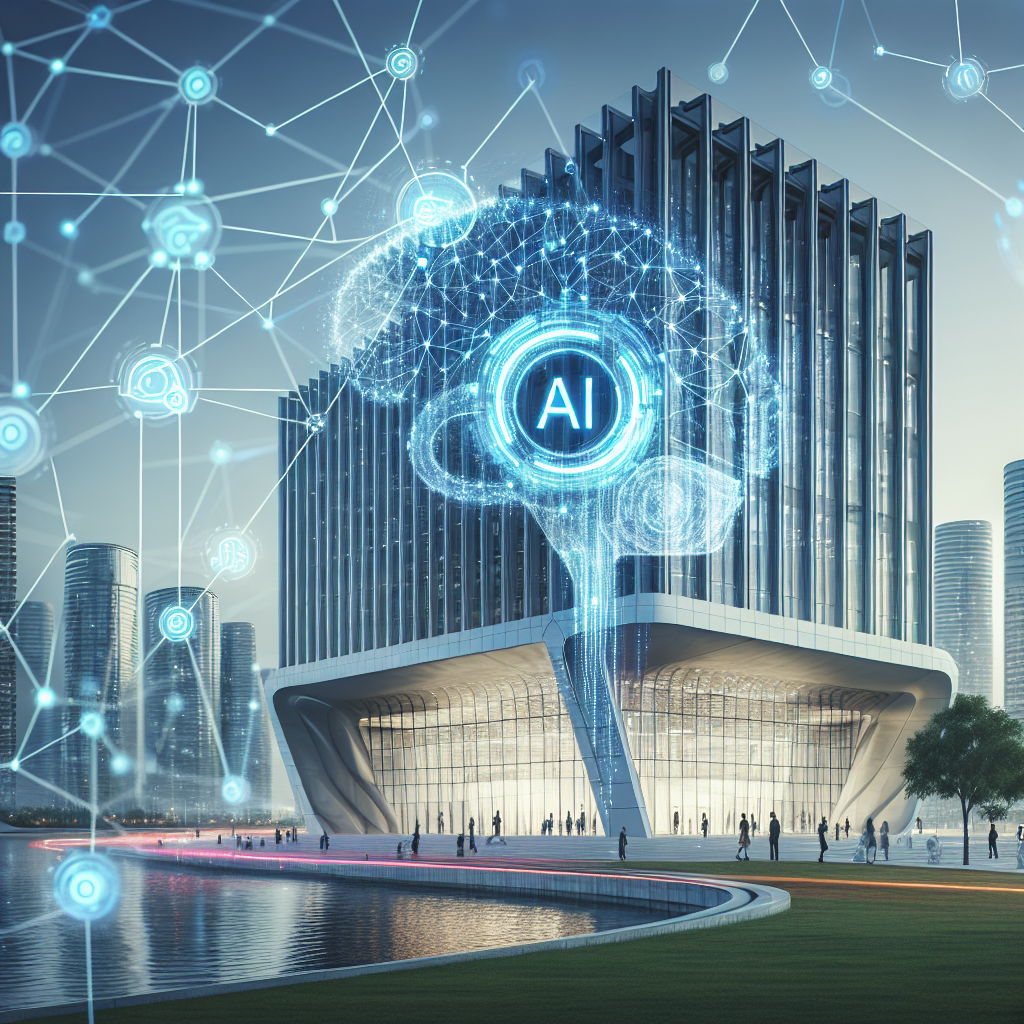Artificial Intelligence (AI) has been making waves in various industries, including architecture. With its ability to process vast amounts of data and perform complex tasks, AI is enhancing the way architects design buildings and spaces. By leveraging AI technology, architects can create more efficient, sustainable, and innovative designs that cater to the needs of human users. In this article, we will explore how AI is revolutionizing the field of architecture and how it is enabling a more human-centered design approach.
AI in Architecture: Enhancing Design Efficiency
One of the key benefits of using AI in architecture is its ability to streamline the design process. Traditional architectural design methods involve a series of manual tasks, such as drafting floor plans, creating 3D models, and analyzing building performance. These tasks can be time-consuming and labor-intensive, leading to longer project timelines and higher costs.
AI technology can automate many of these tasks, allowing architects to focus on more creative and strategic aspects of the design process. For example, AI-powered software can generate 3D models based on design parameters and constraints, saving architects valuable time and effort. AI algorithms can also analyze building performance data to optimize energy efficiency, daylighting, and thermal comfort, leading to more sustainable and environmentally friendly designs.
In addition to streamlining the design process, AI can also help architects explore new design possibilities and push the boundaries of traditional architectural practices. By analyzing vast amounts of design data and patterns, AI algorithms can generate innovative design solutions that may not have been possible through manual methods alone. This can lead to more creative and unique architectural designs that better reflect the needs and preferences of human users.
AI in Architecture: Improving Building Performance
Another key advantage of using AI in architecture is its ability to improve building performance. By analyzing building data and simulating various design scenarios, AI algorithms can optimize building performance in terms of energy efficiency, comfort, and sustainability. This can result in buildings that are more comfortable, healthier, and environmentally friendly for their occupants.
For example, AI-powered software can analyze building energy usage data and identify areas where energy efficiency can be improved. By optimizing building systems, such as HVAC, lighting, and insulation, architects can reduce energy consumption and lower operating costs for building owners. AI algorithms can also simulate daylighting and thermal comfort conditions to ensure that buildings provide a healthy and comfortable environment for occupants.
Additionally, AI technology can help architects design buildings that are more resilient to climate change and natural disasters. By analyzing weather data and simulating extreme weather conditions, AI algorithms can inform design decisions that enhance building durability and safety. This can result in buildings that are better able to withstand floods, hurricanes, earthquakes, and other natural disasters, protecting both the occupants and the building itself.
AI in Architecture: Enhancing User Experience
One of the main goals of architecture is to create spaces that enhance the quality of life for their users. By leveraging AI technology, architects can design buildings that are more responsive to the needs and preferences of human users. AI algorithms can analyze user behavior data, such as occupant movement patterns and activity levels, to inform design decisions that improve user experience and well-being.
For example, AI-powered software can analyze building usage data to optimize space layout and circulation patterns. By understanding how occupants move through a building and interact with different spaces, architects can design layouts that maximize user comfort and efficiency. AI algorithms can also analyze user feedback and preferences to customize building features, such as lighting, acoustics, and temperature, to better suit the needs of individual occupants.
Furthermore, AI technology can enable architects to design buildings that are more inclusive and accessible to a diverse range of users. By analyzing demographic data and accessibility requirements, AI algorithms can inform design decisions that accommodate people with disabilities, elderly individuals, and other underserved populations. This can result in buildings that are more welcoming, inclusive, and supportive of all users, regardless of their age, ability, or background.
FAQs
1. How is AI technology being used in architectural design?
AI technology is being used in architectural design to streamline the design process, improve building performance, and enhance user experience. AI algorithms can automate tasks such as generating 3D models, analyzing building performance data, and optimizing design parameters, leading to more efficient and innovative design solutions.
2. What are the benefits of using AI in architecture?
Some of the benefits of using AI in architecture include faster project timelines, lower costs, more sustainable designs, improved building performance, and enhanced user experience. By leveraging AI technology, architects can create buildings that are more efficient, sustainable, and user-centric, resulting in better outcomes for both building owners and occupants.
3. How does AI technology improve building performance?
AI technology improves building performance by analyzing building data, simulating design scenarios, and optimizing design parameters. AI algorithms can optimize building systems, such as energy usage, daylighting, and thermal comfort, to create buildings that are more energy-efficient, comfortable, and sustainable for their occupants.
4. How does AI technology enhance user experience in architecture?
AI technology enhances user experience in architecture by analyzing user behavior data, customizing building features, and designing inclusive spaces. AI algorithms can analyze user feedback, preferences, and accessibility requirements to inform design decisions that improve user comfort, well-being, and inclusivity in buildings.
5. What are some examples of AI applications in architectural design?
Some examples of AI applications in architectural design include generative design software, energy performance analysis tools, user behavior tracking systems, and accessibility planning algorithms. These AI tools help architects streamline the design process, optimize building performance, and enhance user experience in their projects.

